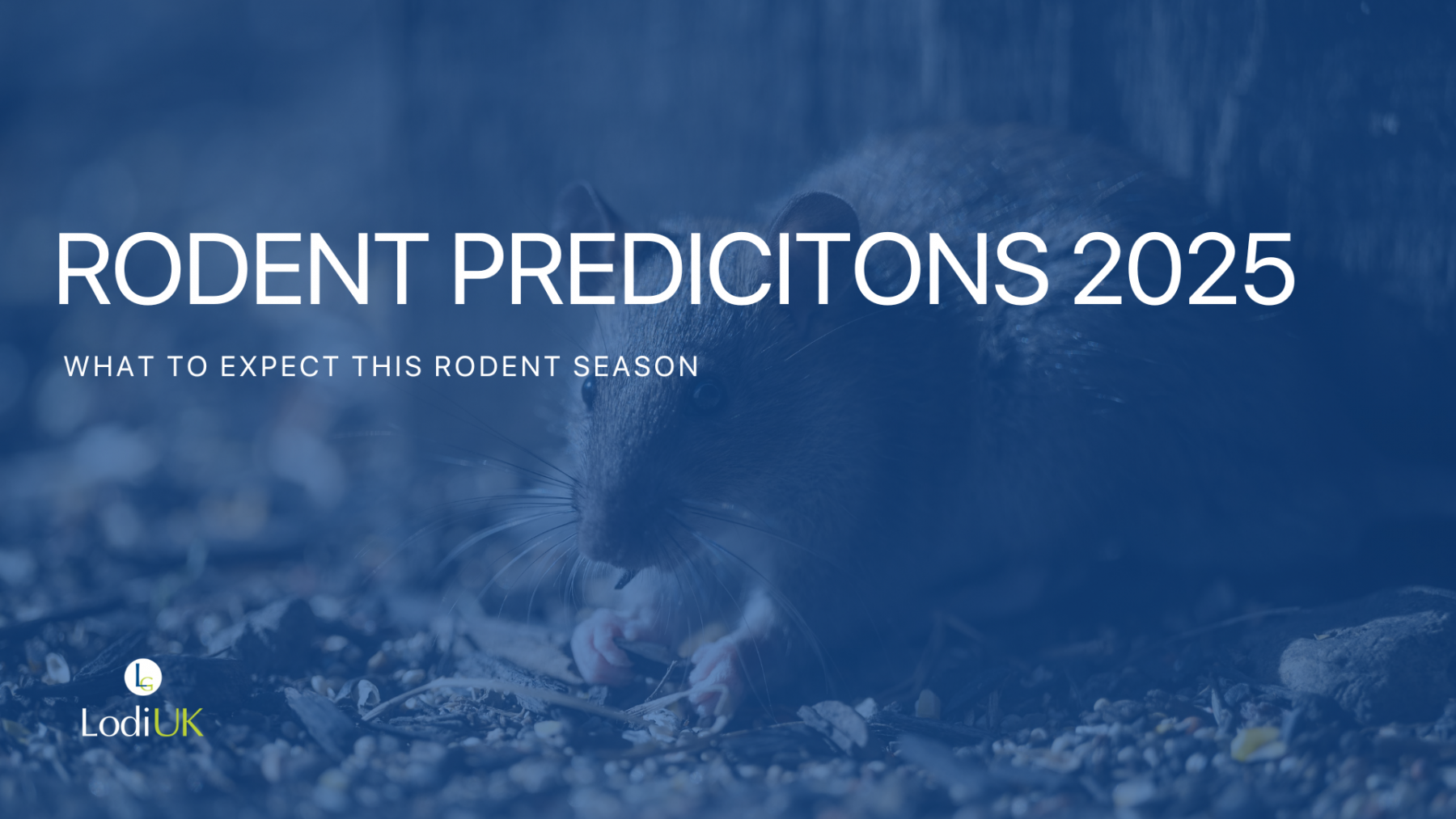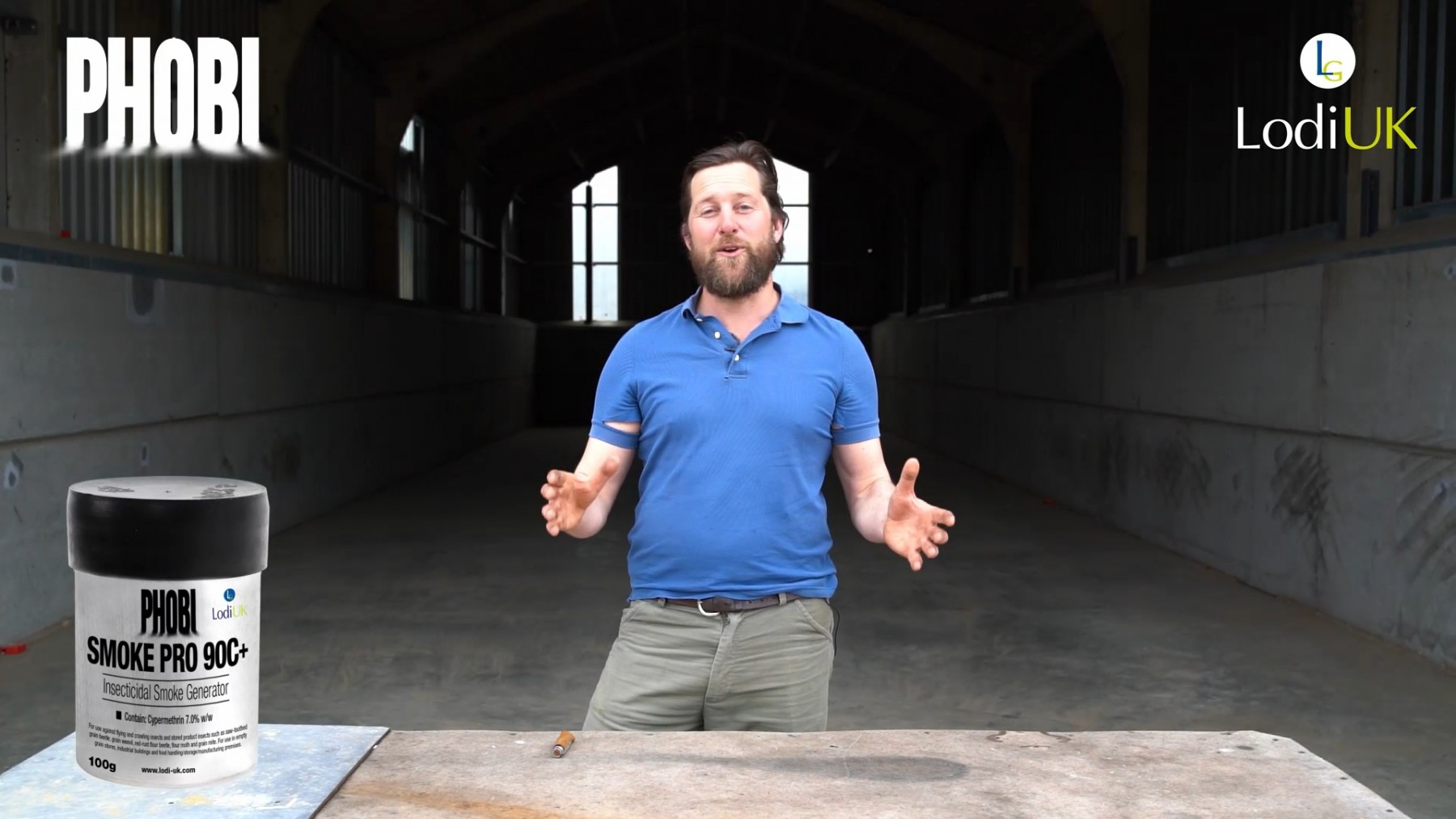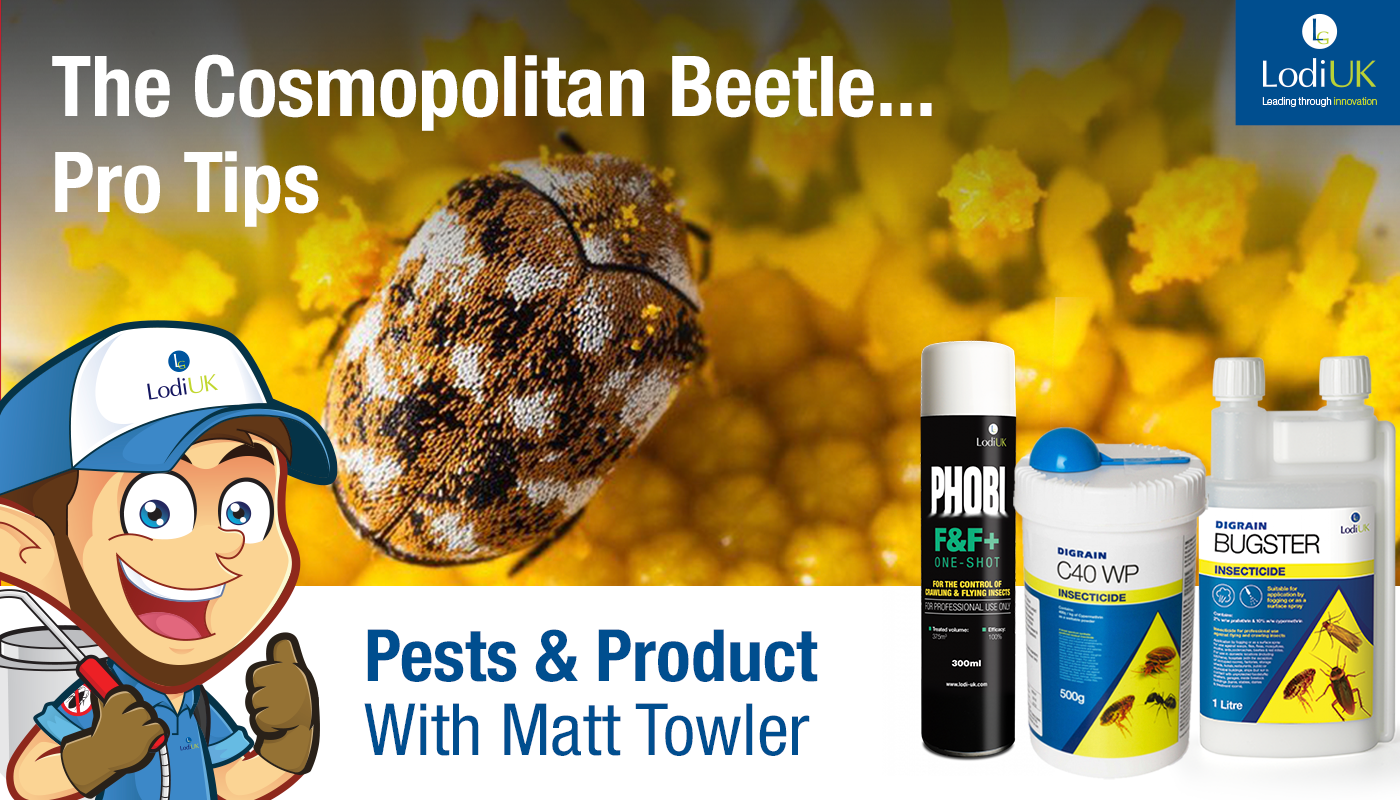
The order Coleoptera has around 40,000 species of beetles. Almost 40% of insects and 25% of all known animal life forms are in this order. The Varied Carpet Beetle and the Fur Beetle are just two beetles that will cause damage to textiles such as wool, fur, skins and feathers. The varied carpet beetle (Anthrenus verbasci) is probably the most common followed by the fur beetle (Attagenus pellio). The varied carpet beetle is a cosmopolitan insect that is found all around the world.
In fact, it is thought that around 90% of households contain one of these two pest species. Most of the time they tend to go unnoticed until they start to cause damage to someone’s valuable cashmere jumpers, antique furniture or carpets. As with most textile pests, varied carpet beetle can be a particular nuisance in museums. They can damage ancient artifacts, clothing and tapestries causing thousands of pounds worth of damage. Fur beetles can sometimes be found in large numbers in cereal mills where they can be found in stored grain products and cereals.
Distinguishing Features
Both insects while very similar in many ways, are very different in both size and appearance.
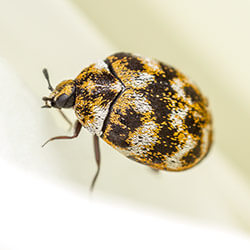 An adult varied carpet beetle is around 3mm in length. They have attractive scales coating the elytra (wing casing) of white, black and yellow gold which form a variegated pattern of white, orange and black patches. This gives the impression of a small oddly coloured ladybird beetle which makes them easily spotted even though they are small.
An adult varied carpet beetle is around 3mm in length. They have attractive scales coating the elytra (wing casing) of white, black and yellow gold which form a variegated pattern of white, orange and black patches. This gives the impression of a small oddly coloured ladybird beetle which makes them easily spotted even though they are small.
 The fur beetle is slightly larger at 4mm-6mm in length and dark red to almost black in colour. There are small white hairs which form in tiny patches on the elytra which a normally unseen with the naked eye.
The fur beetle is slightly larger at 4mm-6mm in length and dark red to almost black in colour. There are small white hairs which form in tiny patches on the elytra which a normally unseen with the naked eye.
Both larvae of these insects are referred to as ‘woolly bear’ and are between 4mm-6mm in length. Both are banded in appearance and are brown with small hairs which cover the body. The last segment of the abdomen has three bunches of golden-brown spear headed hairs. When the larvae of these insects are disturbed, they roll up and appear as tiny golden balls. They erect the spear shaped hairs which can pierce human skin and may cause irritations. The larval stage of the fur beetle will last up to 6 months; however, the varied carpet beetle larvae can last for up to 12 months, having the ability to ward off starvation for long periods.
Carrying out a survey – Where to Look

When surveying for varied carpet beetle, it is wise to pay particular attention to windowsills and sunlit surfaces. Varied carpet beetles are attracted to the light so this can be a sure-fire way to pick up the signs of an infestation however at this stage the infestation will usually be well under way. The adult beetle feed on nectar and pollen. Certain plant species found in many UK gardens can harbour adult varied carpet beetle. One such plant is from the Spiraea family which has many different types of flowering plants and bushes that people love to cut and take into their homes, this then can allow and infestation to take hold. As with all other textile pests, the usual places which must be investigated include the loft, as there may be a current or previous issues with nesting birds or an old wasp’s or bee’s nest. The larvae are small and can be difficult to locate. They can sometimes be found in dark un-trafficked areas or residing under heavy items of furniture. This might along the floor wall junctions of carpeted rooms, in airing cupboards, wardrobes and anywhere there is an abundance of food such as wool, fur, feathers or skins. Other factors can also lead to infestations, and these can include the introduction of second hand or antique furniture which are infested. The fur beetle and the varied carpet beetle are attracted to the light so particular attention should be paid to sunlit areas. The adults feed and live on flowers outdoors, but the female will most usually head into nearby buildings to deposit her eggs. These will usually be laid in bird nests allowing the larvae to spread throughout the rest of the building.
Treatment process
When carrying out treatments in roof voids or loft spaces, it is imperative to check for the presents of bats. If bats are found to be present, it is always worth contacting the Bats Trust to discuss the situation and obtain advice on what you can do, if anything. You must never remove any bird’s nest’s unless you have established that it does not belong to a species which is protected at certain times of the year or contains any live eggs or young.
(many bird species are protected by law and cannot be removed until they are no longer in use)
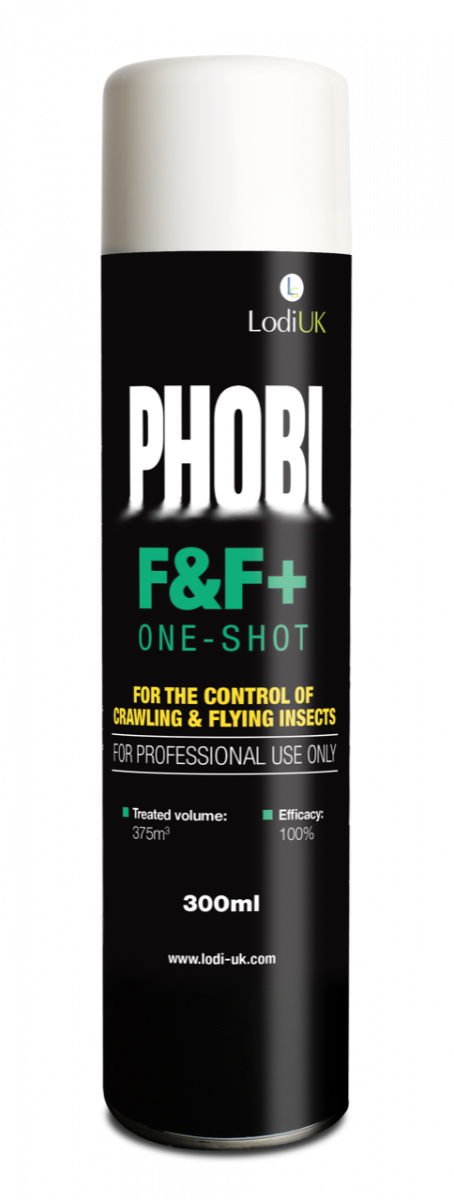
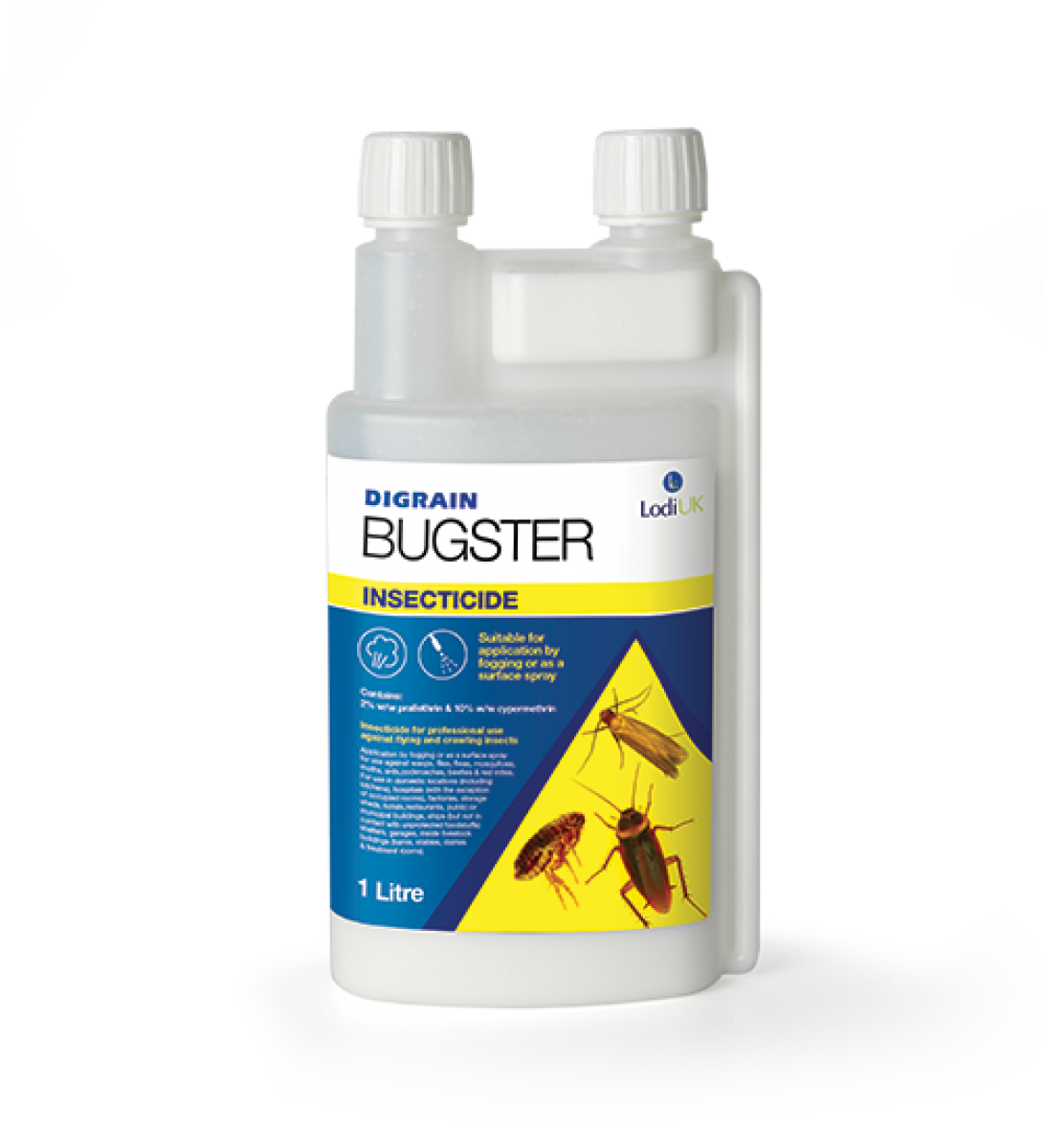 If the infestation has originated in the roof void, it is worth carrying out a treatment starting with either a Phobi F&F One Shot or by fogging with Digrain Bugster EC. Remember you must always cover any open water tanks or those with any available gaps. Remove any infested household items which could be in the roof void by bagging up and sealing before taking through the property.
If the infestation has originated in the roof void, it is worth carrying out a treatment starting with either a Phobi F&F One Shot or by fogging with Digrain Bugster EC. Remember you must always cover any open water tanks or those with any available gaps. Remove any infested household items which could be in the roof void by bagging up and sealing before taking through the property.
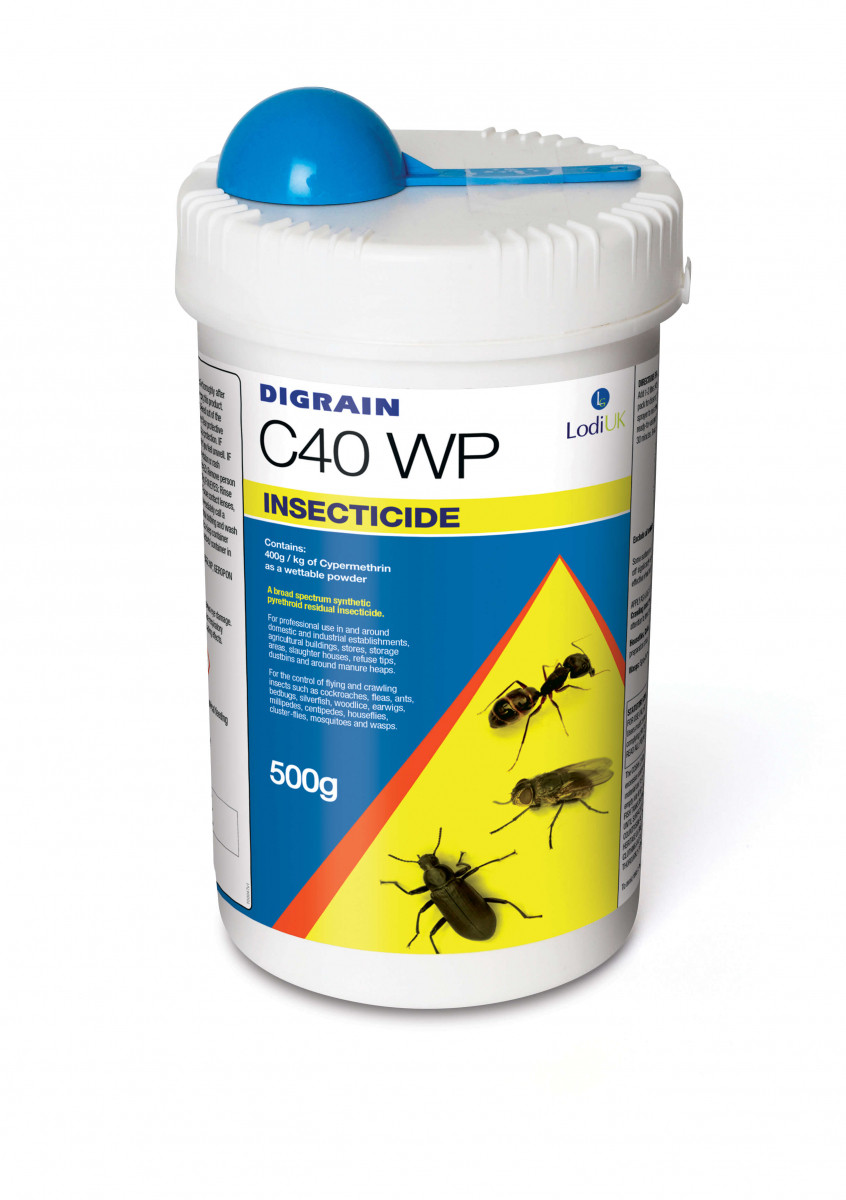 In the main body of the property, it is always recommended to carry out a floor and wall junction spray and treatment. Pay particular attention to the fitted areas of the carpets including the staircase. Insecticides can be used for this including Digrain C40 WP. Digrain C40 WP is a broad use insecticide and will give up to 8 weeks residual helping to continually control the problem between and after visits.
In the main body of the property, it is always recommended to carry out a floor and wall junction spray and treatment. Pay particular attention to the fitted areas of the carpets including the staircase. Insecticides can be used for this including Digrain C40 WP. Digrain C40 WP is a broad use insecticide and will give up to 8 weeks residual helping to continually control the problem between and after visits.
If there are many cracks and crevices, you may want to opt for a dusting powder in these areas such as Desi Dust. This will act as a barrier and control any insects which encounter the product. It may also reach areas that a spray will potentially fall short of.
Treatment programs should be carried out in 2 – 3 visits depending on the level of infestation. It is always advisable to ask the client to carry out a thorough hoovering of all rooms first which will help remove some of the infestation.

